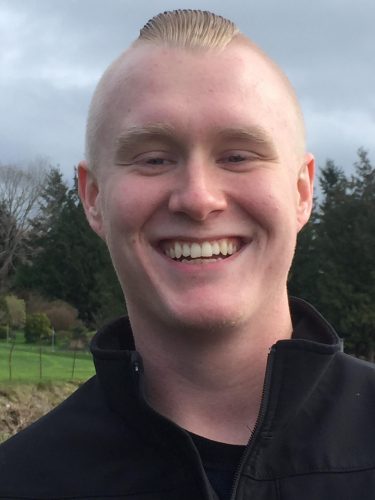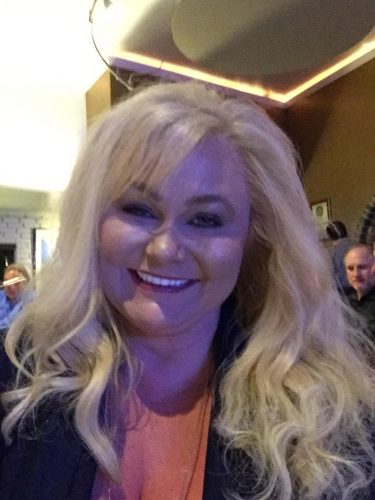Drugs
Learn the risks, Halifax; illicit fentanyl is here
Nova Scotians should take the advice from people out west

caption
Fake prescription drugs laced with fentanyl.
caption
Fake prescription drugs laced with fentanyl.Some people may think that illicit fentanyl is only a problem in places like British Columbia, but they are wrong. Illicit fentanyl is here in Nova Scotia and people need to know the risks.
Since January, Halifax Regional Police have conducted six residential searches where fake oxycodone pills containing fentanyl have been found. Sixty people died from opioid overdoses in Nova Scotia last year, four of which were related to illicit fentanyl.
These numbers may be far less than in B.C., where there were 308 overdoses in the first five months of 2016 alone. But Nova Scotians should be getting ready to deal with the issues that come with fentanyl none the less.
Fentanyl is an extremely powerful and deadly opioid, and the crisis facing families, health authorities and police is heading east across Canada. Related stories
It can take as little as two milligrams to kill an adult, which is equal to about two to three grains of sand. There are two types of users, those who know they are using it and those who are using other street drugs, like cocaine or a methamphetamine, that is laced with fentanyl and they unknowingly ingest it.
The Signal spoke to health authorities, law enforcement and a parent in B.C. We got their take on the national opioid crisis, and what advice they have for people here.
Health
Last April, B.C. declared a public health emergency regarding the spike in opioid-related deaths.
“We know that there is no easy and quick solution to the overdose crisis,” said Lori Cascaden, the manager of media relations and issues management at the Ministry of Health in British Columbia, in an email.
“However, all sectors across the system must mobilize to respond to overdose and to save lives.”
The situation became so dire that Dr. Perry Kendall, B.C.’s provincial health officer, enacted emergency measures under Part 5 of the Public Health Act, which allows public health officials to gather detailed information on overdoses. This information was essential for knowing what areas of the province were most at risk.
This information told health officials where naloxone kits where most needed. It also helped get people who use drugs treatment centres in their area. It also allowed provincial health officials in the province to collect information on overdoses more quickly, allowing them to be more proactive in their approach to warning drug users about the risks.
Naloxone is a medication that stops the effects of opioid drugs, and in some cases reverse the effects of an opioid overdose.
“By collecting this information, we have been able to target our support where it has the greatest impact,” said Cascaden. “It has also galvanized the health and public safety sectors to take wide-ranging action, and resulted in the issue being prioritized for resource allocation.”
B.C. is also promising to make treatment and recovery more accessible. Sixty additional substance use treatment beds and 50 outpatient treatment spaces have been promised by the government. This is in addition to 500 new substance treatment beds that will be operational by the end of the month.
The province also opened the BC Centre on Substance Use in December, a provincially networked resource centre based in Vancouver. The centre is for medical practitioners and aims to provide the most up to date medical information on substance abuse and methods of combating it.
Another ministerial order under the B.C.’s Emergency Health Services Act and Health Authorities Act was instituted last December, and will remain active until the public health emergency is over. The act allows emergency health services the ability to provide essential overdose services on an emergency basis. This responsibility lies with B.C.’s regional health authorities.
Since the emergency began, B.C.’s government has pledged over $100 million to support the overdose response plan. The funding also went to guns and gangs units in the province in addition to coroner services.
“We will continue to combat this crisis with our partners at all levels of government and public safety and encourage other jurisdictions to do the same,” said Cascaden.
Like Nova Scotia, B.C.’s immediate short-term plan was a harm reduction strategy that included making naloxone more accessible by dispensing more than 32,000 kits across the province.
Nova Scotia currently has plans to buy 5,000 new naloxone kits.
Policing
Police say most of the illicit fentanyl in Canada comes from China. It is then distributed throughout the country by way of organized crime.
The RCMP said that in the past year, 10 people have been arrested in B.C. in relation to trafficking and seizures of confirmed illicit fentanyl.
Sgt. Alanna Dunlop is in charge of the media relations unit at the RCMP detachment in Surrey, B.C. Her advice for dealing with illicit opioids in Nova Scotia based on collaboration.
“I would tell any group this; we are better if we work together,” said Dunlop, referring to law enforcement, front line emergency responders, health authorities, community organizations and the larger community.
“Bring in all the perspectives together in a joint initiative, it is stronger and more effective in the end. It’s impacting families; it’s impacting all kinds of different people from different places. So there is no one profile of person that it fits. Anyone could be at risk.”
In terms of law enforcement, Dunlop said that being aware of what is happening in the community is important. 135 A St. is an area of Surrey that has been hit hard by the opioid crisis. Last December, a team was launched, and devoted to being in that area 24 hours a day. The group, called the Surrey Outreach Team, is made up of four officers and four bylaw officers.
135 A St. has a large homeless population, as well as many people who are addicted to drugs and suffering from mental illnesses. Because of these factors, police were seeing a spike in the number of opioid overdoses in the area.
By working with the local health authorities, front line medical responders and firefighters, the team was able to keep a constant presence in the community and stabilize the public safety.
“That is more of a prevention type of approach. However, we also need to look at drug supply in that area as well,” said Dunlop.
Dunlop made it clear that enforcement is just as important as prevention. In January, the team was successful in locating and obtaining illicit fentanyl heroin that was destined for this part of town.
“We are also looking at the enforcement, particularly those who are trying to prey upon those vulnerable people in that area,” said Dunlop.
As for her advice to the public, she wants people on the East Coast to stay informed, know what drugs they are taking and most importantly listen to what the experts have to say about the issues.
Families
Brandon Jansen, 20, from Coquitlam, B.C., lost his battle with an opioid addiction on March 7, 2016 while he was seeking treatment at a centre on Vancouver Island.
His addiction to opioids and illicit fentanyl started when he thought he was taking prescription drugs at a party. These drugs turned out to be laced with fentanyl.

caption
Brandon Jansen
caption
Michelle JansenSince her son’s death, Michelle Jansen has become very outspoken regarding the opioid crisis and had some advice for families in Halifax.
“I would advise parents to keep open lines of communication with their children, and if they do find that their child is using drugs to tell them that most drugs are laced with fentanyl now,” said Jansen. “It may not be as prevalent in Nova Scotia, but when it hits it hits really fast and then it snowballs.”
She thinks that if parents know their child or children are suffering from an opioid addiction, they must get professional help. She recommends parents take them to see a doctor, an addictions specialist and to get them a naloxone kit, as an opioid substitute, to help prevent relapses and cravings. She added that while trying to fix the problem as a family is important, it is not enough.
Jansen also thinks that the stigma around drug addiction and substance abuse is one reason little has been done to combat the issue. She said governments need to do more.
“There is a very small window of opportunity when an addict decides that they want to get help,” said Jansen. “You can’t say to someone who is ready for help, well you know we don’t have a bed for you right now, but in three or four months from now we can put your name on a waiting list. That’s not how it works.”
She stressed the fact that the old school mentality of kicking a drug habit by simply cutting the addict off does not work. To her, it takes a community to help a person suffering from an addiction.
“The reality is fentanyl will kill, and you don’t find people that are addicted to fentanyl for any length of time because they are dead,” said Jansen. “That is the sad reality of it.”

